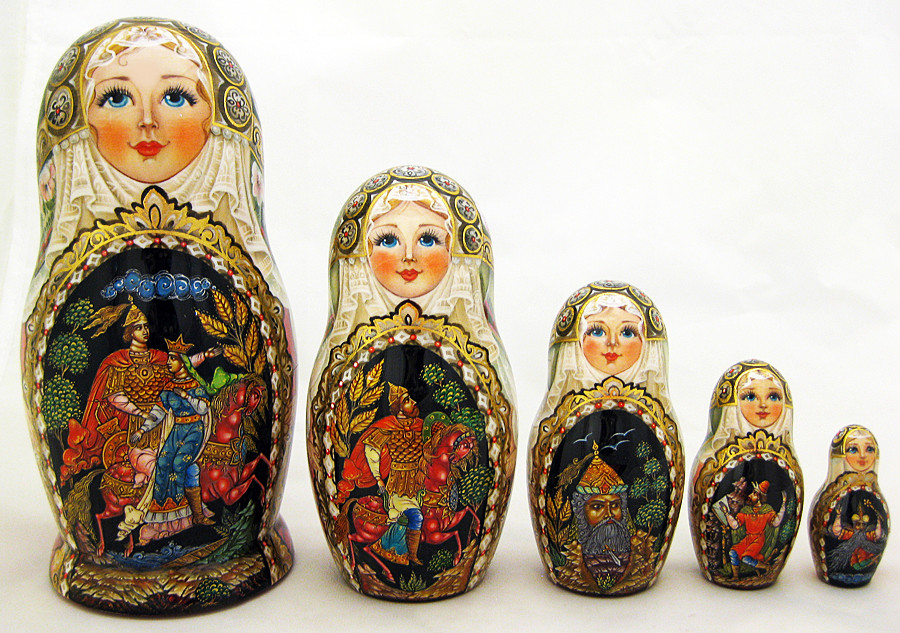Matryoshka Dolls - History
Matryoshka dolls have been made in Russia since the end of the 19th century. Historians of Russian folk art have traced the origin of the Russian matryoshka doll to a specific 7-piece set of nesting dolls made on the island of Honshu, Japan in the late 1800s. The "Fukuruma" doll, named for the baldheaded Japanese sage that appears as the largest figure, arrived in Russia in the 1890s where it ended up in the hands of an artist of the Children's Education Workshop near Moscow.
At the end of the 19th century a cultural revival swept through Russia. At this time the Children's Education Workshop was established to produce a variety of folk-art style toys for children, including dolls in traditional ethnic peasant dress. With the arrival of the "Fukuruma" nesting set at the Workshop, artist S.V. Malyutin was inspired to create a new Russian folk art - the matryoshka.
The first matryoshka nesting doll made from Malyutin's sketches was an eight piece set crafted by V. Zvesdochkin, the best toy-maker of Sergiev Posad (called Zagorsk during the Communist Era). When the Children's Education Workshop closed in the late 1890's the center for production of Russian matryoshka dolls shifted to Sergiev Posad. Today Sergiev Posad continues to be a major source for matryoshka dolls and other wood crafts. Matryoshka Collector's Guide.
Name & Symbolism
The name "matryoshka" comes from the Russian word for mother mat (taken from the Latin root mater - mother). Names such as Matryona and Matryosha were common female names in Provincial Russia prior to the Revolution of 1917. The suffix ...oshka (or ... ushka) is frequently used in Russian to denote a diminutive and endearing form of a name. A liberal interpretation of the term matryoshka could be taken to mean "little mother."
Construction
The most common wood used for making matryoshka dolls is lime and birch. Trees are usually cut in the spring, stripped of bark, and arranged in aerated stacks to dry for several years. It takes experience to judge when the wood is just right, not too dry nor too moist. The logs are then cut into work pieces for the dolls. Every work piece goes through as many as 15 turning operations before being fashioned into a doll. The smallest, solid figures are usually made first. In the making of the next size doll the bottom is made first. It is processed to the necessary height and then the top end is removed. After that the upper ring is made on which the top part of the doll will be fitted and then the lower half is made. The doll's head is crafted next and enough wood is removed from inside the head to slip onto the upper ring. The fitting is done completely by intuition with no measurements taken. When the doll blank is finished it is cleaned, primed, and then dried. The blank matryoshka is now ready to be painted.
Russian Matryoshka Dolls Today
Today's renaissance in Russian matryoshka dolls is due largely to the disintegration of the Soviet Union and a resulting increased interest in Russia. Economic and creative freedom made it possible for small private workshops to manufacture and decorate the dolls and many such workshops have been established in and around the Moscow region. Truly skilled doll artists can make a good living at their endeavors now that they have the freedom to work for themselves in an open market.


